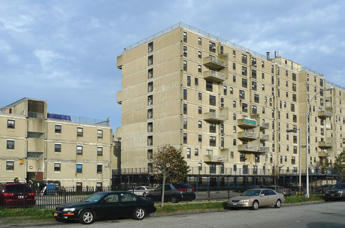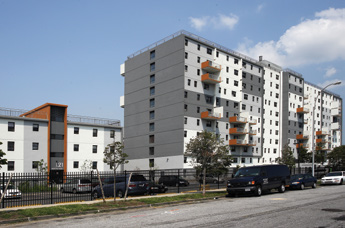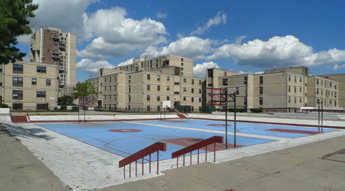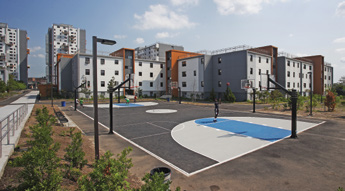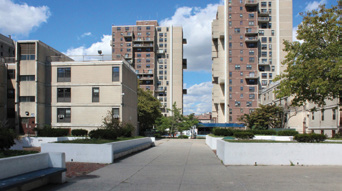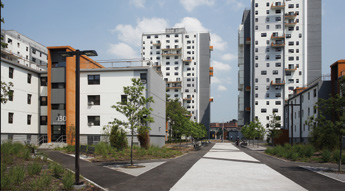Description + function
Coming together with other housing organizations can help you identify local and shared resources, pool information about equipment and infrastructure pricing and the best ways to get residents involved.
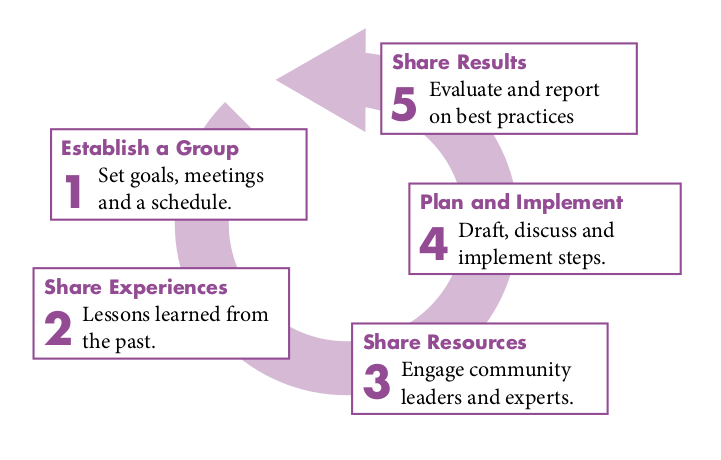
Strategy into action
To start a multi-organizational learning group, identify a facilitator and make a list of potential members. The facilitator will schedule meetings and run them, draft agendas and keep gatherings productive and focused.
Explore private and government funding to enhance your collaboration’s resilience capacity.
- Develop a group mission statement beginning with its function and purpose. This will create group identity and structure.
- Logistics. Each organization should commit two staff members to attend group meetings and represent the organization, conveying information to organizational leadership. Schedule meetings on a consistent basis. Send out the agenda a week in advance.
- Capacity building. Invite local government officials such as council members and community board representatives and technical experts to build your group’s capacity and connection to the neighborhood.
- Develop a communication platform which group members can easily access. Develop an Email list to support communications between meetings. Establish a communications plan to remain in touch during a disaster.
- Funding. Apply for philanthropic and government funding.
Operations + maintenance
Encourage the group to devise strategies for their buildings and surrounding areas. Ask group members to invite building managers, emergency preparedness coordinators and other management members to meetings. Field staff are the first line of defense during emergencies, and their participation in your meeting is vital.

Estimated cost
-
$
-
$$
-
$$$
-
$$$$
Supporting strategies
Resources
-
Integrating Hazard Mitigation into Local Planning, FEMA, March 2013
www.fema.gov/es/media-library/assets/documents/31372 -
Lower East Side Long Term Recovery Group.
lesready.org/mission-statement/ -
Resilience Learning Collaborative, Enterprise Community Partners.
www.enterprisecommunity.org/where-we-work/new-york/priorities-and-impact/hurricane-sandy-rebuilding - KeepSafe Community Engagement: Prepare For Action Together. keepsafeguide.enterprisecommunity.org/en/community-engagement-prepare-action-together
- Community Preparedness Toolkit. https://www.ready.gov/community-preparedness-toolkit
- Training Community Members to Prepare for Disasters. Corporation for National and Community Service. www.nationalservice.gov/resources/disaster-services/training-community-members-prepare-disasters
Background
In the wake of Superstorm Sandy, Enterprise brought together 12 affordable housing organizations from New York and New Jersey for a two-year learning collaborative program designed to build resilience. Participants manage 293 multifamily buildings with 14,500 housing units.
The goal was to identify shared best practices and challenges in response and recovery after Sandy, and to develop a long-term resilience plan for multifamily housing.
Strategy
Enterprise facilitated the group’s meetings and development. The group met every three months and each meeting featured a speaker. At the end of the two-year period, the accomplishments included:
- A unique emergency plan and protocols customized to each organization.
- Resilience assessments and capital plans for 56 vulnerable buildings, and the implementation of a variety of resilience measures from on-site generators to backflow prevention valves.
- A framework for multifamily resilience which divided resilience planning into four themes: Resident Resilience, Building Resilience, Organizational Resilience and Community Resilience.
- The development of a series of tools promoting emergency preparedness and resilience for multifamily buildings.
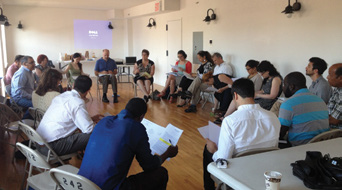
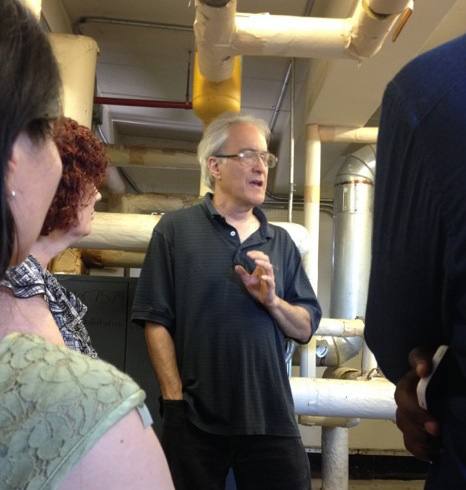
Background
Arverne View is an 11-building, 1093-unit complex of affordable housing in Far Rockaway, Queens, NY. Far Rockaway is a peninsula between the Atlantic Ocean and Jamaica Bay located in the FEMA AE flood zone.
The complex suffered extensive damage during Superstorm Sandy. When the resilience retrofit began, the complex was in disrepair – 350 units were vacant, many uninhabitable because of water leaks, mold and inadequate envelope sealing.
Strategy
L+M Development Partners Inc. led a renovation of the entire complex, employing several of the strategies in this manual.
-
3
Site Perimeter Floodproofing
A permanent flood barrier was installed to protect against wave surge and perimeter flooding. -
8
Envelope Efficiency
An Exterior Insulation Finishing System (EIFS) was installed to prevent envelope water infiltration, improve envelope efficiency and improve the look of the buildings and community. -
9
Elevated Equipment
Electric and mechanical equipment was elevated above the DFE to protect it from flooding. -
11
Surface Stormwater Management
A campus-wide stormwater management plan was put in place to help manage on site stormwater. -
14
Maintaining Backup Power to Critical Systems
Generator capacity was added to provide backup power to the community during a power outage. -
18
Creating Community Resilience Spaces
Meeting and disaster relief areas were identified to be used as resilience hubs during an emergency event. -
19
Developing an Emergency Management Manual
An emergency action plan to manage future disasters was developed.
These energy efficiency measures were also installed: ENERGY STAR appliances, LED light fixtures, motion sensors in the stairwells and hallways and low-flow water fixtures.
Cost
L+M financed the acquisition and construction using New York Housing Development Corporation (HDC) taxable and tax-exempt bonds, equity and existing restated debt. Energy upgrades were sponsored by the Multifamily Performance Program of the New York State Energy and Research Development Authority (NYSERDA).
Savings
With the resilience retrofit the development:
- Reduced energy use by 30 percent.
- Cut private flood insurance premiums.
- Filled all 350 vacancies.
- Significantly lowered resident turnover.
- Improved rent collection rates.
- Reduced climate risk.
